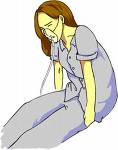Yoga cures Asthma: Yes It Really Works!!!
 Asthma is derived from Greek word which means "panting, gasping or short-drawn breath." It is one of the most discomforting of respiratory ailments, known to affect around 5% of the world’s adult population and 10% of children.
Asthma is derived from Greek word which means "panting, gasping or short-drawn breath." It is one of the most discomforting of respiratory ailments, known to affect around 5% of the world’s adult population and 10% of children.
Tests carried out at Yoga Therapy Centers across the world have shown remarkable results in managing asthma. In some cases it has also been found that asthma attacks can actually be averted, without the aid of drugs, just through yoga practices.
Since Yoga believes that the mind is central to a diseased condition, pacifying and placating it would, in itself, help cure asthma to a great extent. The practice of yogasanas, yogic kriyas, pranayamas, relaxation and meditation calm down the whole system. This, in turn, facilitates proper assimilation of food and strengthens the lungs, digestive and circulatory system. Over a period of time, that checks asthma attacks and even cures the asthma condition.
Yogic practices result in more anxiety reduction than drugs do. Yoga gives patients access to their own internal experience and helps them pin-point the cause of their ailment, i.e find their own triggers. This comes through increased self-awareness.
Simple Yoga practices help regulate breathing patterns, as well as enhance lung functioning. As a result, asthma patients are able to manage their condition by simply allaying their fears and anxieties.
Yoga also has a stabilizing effect on the body’s immune system. It is now proven that the regular and consistent practice of yoga raises the body’s tolerance to infection as well as its local resistance to infections in the respiratory tract.
Yogic rest and relaxation reduce the nervous system’s overall activity, leading to remarkable recovery. Only Yoga offers resources like Abhyasa (regular, constant practice) and Vairagya (detachment) as means of holistic healing.
The yoga practices for asthma work best on an empty stomach, but you should continue to sip water from time to time, to help keep your airways moist. Wear light, loose-fitting clothes and practice in a comfortable, well-ventilated, airy room or outdoors, with adequate room to lie down. If you experience any symptoms lying down, sit on a chair for a while and rest your head on a table, either on your folded arms or on one cheek. If you feel nauseous, anxious, or short of breath in any of the practices, stop immediately, get up and walk around.
You are probably just hyperventilating and need to burn off some energy. Don't resume your practices right away. Rather give them a break for about a day or two.
Above all, tell yourself from time to time – particularly when you get irritated or upset with yourself – that the way you breathe now is what is making you ill. It is conditioned behavior, which can easily be altered.
SOURCE: Kevin Pederson from yogawiz.com, an online guide on yoga, fitness and wellness.


No comments:
Post a Comment